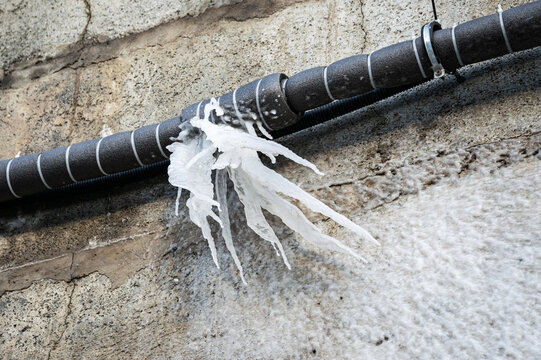Protecting Pipes from Freezing Issues: Critical Strategies
Protecting Pipes from Freezing Issues: Critical Strategies
Blog Article
This great article down below pertaining to How to Prevent Your Pipes From Freezing is incredibly motivating. You should read it.

Cold weather can wreak havoc on your plumbing, especially by freezing pipelines. Below's just how to prevent it from happening and what to do if it does.
Introduction
As temperatures drop, the risk of frozen pipes increases, possibly leading to costly repairs and water damages. Comprehending just how to prevent frozen pipelines is critical for homeowners in chilly environments.
Avoidance Tips
Shielding at risk pipes
Wrap pipes in insulation sleeves or use heat tape to safeguard them from freezing temperatures. Focus on pipes in unheated or exterior areas of the home.
Heating techniques
Maintain indoor rooms properly heated, specifically areas with plumbing. Open up closet doors to permit warm air to circulate around pipelines under sinks.
Just how to identify icy pipes
Seek reduced water flow from faucets, uncommon odors or sounds from pipelines, and visible frost on subjected pipelines.
Long-Term Solutions
Architectural adjustments
Think about rerouting pipes away from outside wall surfaces or unheated locations. Include added insulation to attics, cellars, and crawl spaces.
Updating insulation
Purchase high-grade insulation for pipelines, attic rooms, and wall surfaces. Appropriate insulation assists maintain consistent temperatures and reduces the threat of icy pipes.
Safeguarding Outdoor Pipes
Yard hose pipes and outdoor taps
Detach and drain yard hose pipes prior to wintertime. Install frost-proof faucets or cover exterior faucets with shielded caps.
Comprehending Icy Pipes
What creates pipes to ice up?
Pipes ice up when exposed to temperature levels listed below 32 ° F (0 ° C) for extended periods. As water inside the pipes freezes, it expands, putting pressure on the pipeline wall surfaces and possibly triggering them to rupture.
Threats and problems
Icy pipelines can bring about water system disruptions, building damage, and costly repair services. Burst pipes can flood homes and create substantial structural damage.
Signs of Frozen Pipeline
Determining icy pipes early can avoid them from breaking.
What to Do If Your Pipelines Freeze
Immediate activities to take
If you think frozen pipes, keep taps open up to soothe stress as the ice melts. Use a hairdryer or towels taken in warm water to thaw pipes gradually.
Final thought
Avoiding icy pipelines requires aggressive steps and quick actions. By understanding the reasons, signs, and safety nets, property owners can shield their plumbing throughout cold weather.
5 Ways to Prevent Frozen Pipes
Drain Outdoor Faucets and Disconnect Hoses
First, close the shut-off valve that controls the flow of water in the pipe to your outdoor faucet. Then, head outside to disconnect and drain your hose and open the outdoor faucet to allow the water to completely drain out of the line. Turn off the faucet when done. Finally, head back to the shut-off valve and drain the remaining water inside the pipe into a bucket or container. Additionally, if you have a home irrigation system, you should consider hiring an expert to clear the system of water each year.
Insulate Pipes
One of the best and most cost-effective methods for preventing frozen water pipes is to wrap your pipes with insulation. This is especially important for areas in your home that aren’t exposed to heat, such as an attic. We suggest using foam sleeves, which can typically be found at your local hardware store.
Keep Heat Running at 65
Your pipes are located inside your walls, and the temperature there is much colder than the rest of the house. To prevent your pipes from freezing, The Insurance Information Institute suggests that you keep your home heated to at least 65 degrees, even when traveling. You may want to invest in smart devices that can keep an eye on the temperature in your home while you’re away.
Leave Water Dripping
Moving water — even a small trickle — can prevent ice from forming inside your pipes. When freezing temps are imminent, start a drip of water from all faucets that serve exposed pipes. Leaving a few faucets running will also help relieve pressure inside the pipes and help prevent a rupture if the water inside freezes.
Open Cupboard Doors
Warm your kitchen and bathroom pipes by opening cupboards and vanities. You should also leave your interior doors ajar to help warm air circulate evenly throughout your home.

Do you appreciate reading up on Winter Plumbing Precautions: Preventing Frozen Pipes? Make a remark down the page. We will be delighted to hear your feelings about this write up. Hoping that you come back again later on. Loved our blog? Please quickly share it. Help another person discover it. Thanks so much for your time invested reading it.
Quote & Schedule Report this page